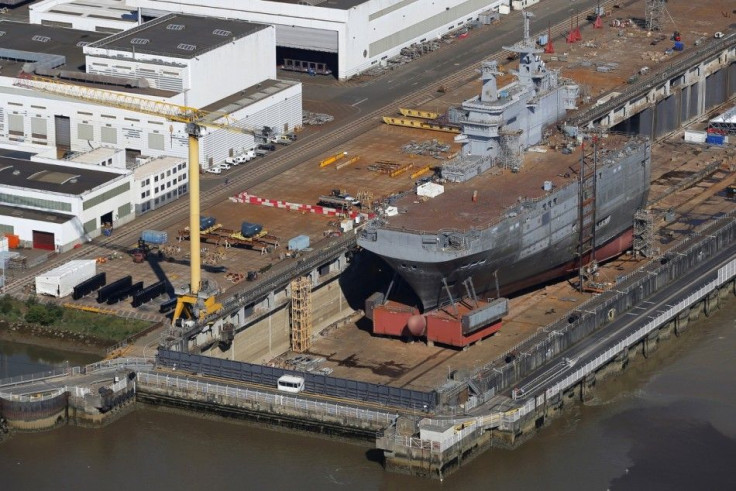U.S. Says Military Option On Iran Is 'Intact' On Nuclear Issue Even As US Warships Are Heading Towards Yemeni Waters To Intercept Iran's Shipments

The military option of the United States on Iran to prevent the latter from obtaining a nuclear weapon remains "intact" despite recent Russia's decision to supply it with surface-to-air S-300 missiles, confirmed a the top most U.S. general.
Speaking at a news conference, General Martin Dempsey, chairman of the U.S. Joint Chiefs of Staff, said, "The military option that I owe the president encourages a diplomatic solution but if the diplomacy fails to ensure that Iran does not achieve a nuclear weapon, the other option is intact."
Dempsey made it clear that the delivery of the Russian missile-defense system will not make any difference in the United States' ability to strike at Iran’s nuclear facilities, if necessary. "We've known about the potential for that system to be sold to Iran for several years and have accounted for it in all of our planning," he said.
The United States has not ruled out possible military action to stop Iran from acquiring nuclear weapons, in case diplomacy fails. It may be recalled that six global powers and Iran agreed on April 2, on a framework deal that would set limits on Iran's nuclear activities in return for a relief from sanctions enforced by UN, EU, and the U.S. The deadline for the final accord is June 30. The West fears that Iran's nuclear program is aimed at developing nuclear weapons, which Tehran stoutly denies.
Russia’s Missile Trophy
Iran got an unexpected boost from Russia when, on April 16, President Vladimir Putin announced his decision to lift the ban on supplying Iran with the S-300 missile-defense system as a reward for Tehran's demonstrated desire to resolve long pending dispute over its nuclear program. "And now with the progress of the Iranian nuclear track -- and that is obviously positive -- we do not see any reason to keep the ban," Putin said.
Both Israel and the United States criticised Putin for lifting the ban, which Russia imposed in 2010 after supporting UN sanctions that restricted weapons trade with Tehran. In his rejoinder, the Russian president said S-300 missiles were not prohibited by those sanctions and were purely defensive and not a threat to Israel. Putin insisted that his country will continue to work "as one" with its partners at the UN over Iran and its nuclear program.
US Warships To Intercept Iranian Shipments
Meanwhile, the U.S. toughened its stand on Iran’s support for Houthi rebels who are fighting the official forces in Yemen. The Navy confirmed that the aircraft carrier USS Theodore Roosevelt is headed to Yemeni waters to intercept any Iranian weapons shipments. Yemen situation escalated substantially after Iran parked two warships off the Yemeni coast. U.S. Navy officials say the aircraft carrier USS Theodore Roosevelt is steaming toward the waters off Yemen and will join other American ships prepared to intercept any Iranian vessels carrying weapons to the Houthi rebels.
There are about 9 U.S. ships in the region, including cruisers and destroyers, carrying teams that can board and search other vessels. The two Iran warships are reportedly located in the immediate vicinity of not only two US aircraft carriers, CVN-71 Teddy Roosevelt and CVN-70 Vinson, but the big-deck amphibious warship Iwo Jima is also providing marine support. This means the odds of a naval "accident" in the Red Sea continues to be high.
UN Resolution
The deployment of U.S warships comes on the back of a U.N. Security Council resolution that imposed an arms embargo on leaders of the Iranian-backed Shiite Houthi rebels. War ship Roosevelt is now moving through the Arabian Sea carrying F/A-18 fighter jets. Roosevelt is a deterrent and will show its force in the region, reports AP. The U.S. Navy quickly has beefed presence in the Gulf of Aden and southern Arabian Sea after a convoy of about eight Iranian ships moved toward Yemen allegedly carrying arms for the Houthis trying to take control of Yemen.
(For feedback/comments, contact the writer at kalyanaussie@gmail.com)





















